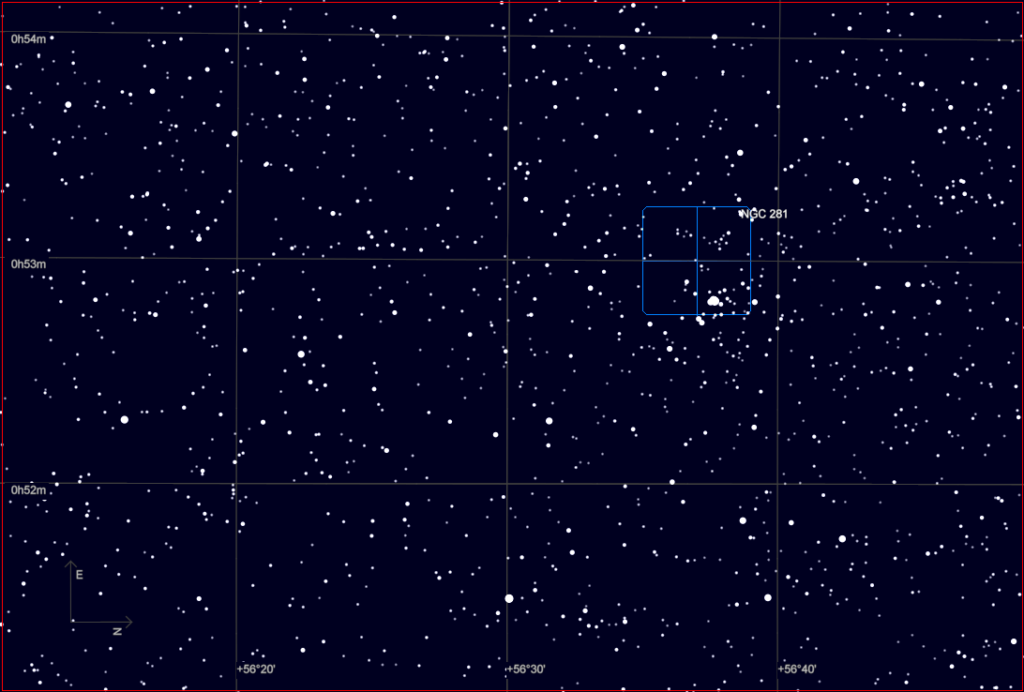There are 3 basic types of nebulae. This image of an area near Orion’s belt features all three. At lower left, the blue nebula (NGC 2023) is a reflection nebula. Lit by star HD 37903, the gas and dust simply reflect the star’s light. The red background nebula (IC 434) is an emission nebula. Located about 1,500 Ly from the Sun it receives enough energy from Sigma Orionis that the hydrogen in the cloud glows like a neon sign. The Horsehead nebula (Barnard 33) is a dark nebula. This cloud of gas is dense enough to completely block the light from IC 434. The spray of blue light from the left is scattered light from Alnitak, the eastern most star in the belt of Orion.
First discovered by Williamina Fleming on a photographic plate in 1888, the dark cloud remains a very difficult visual object to view in a telescope. It takes a very dark clear sky and a fairly large telescope to just make out the outline of the horse’s head.
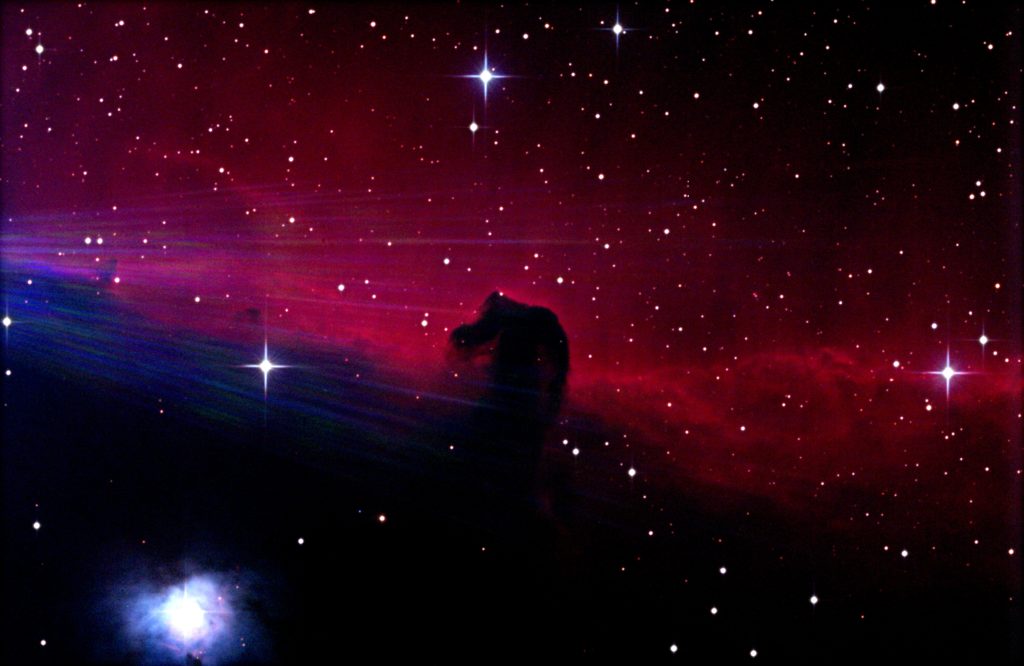
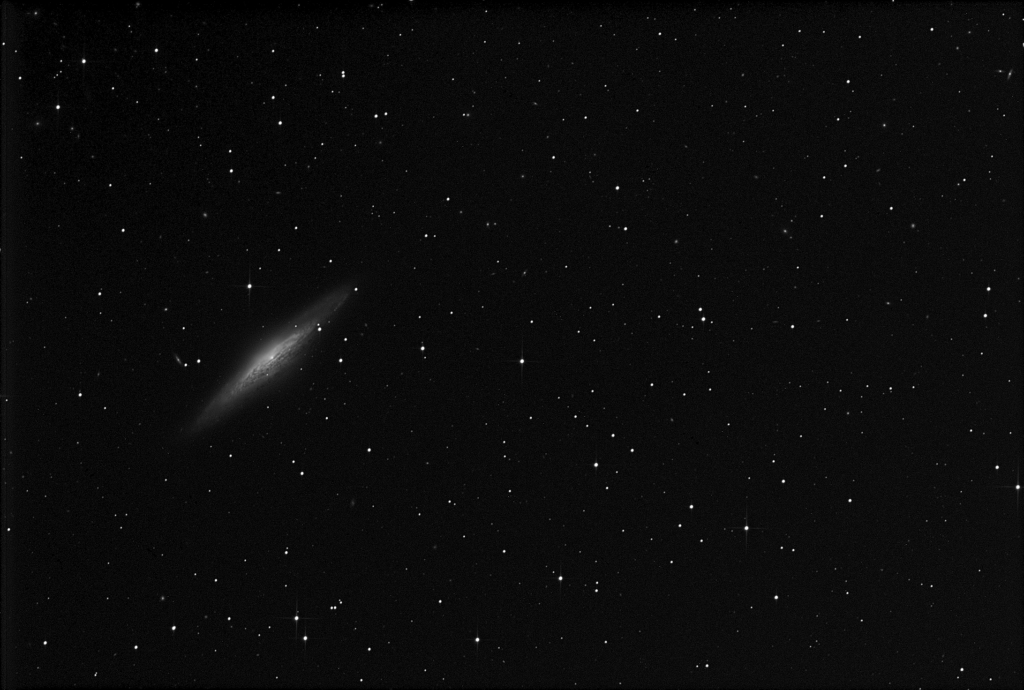
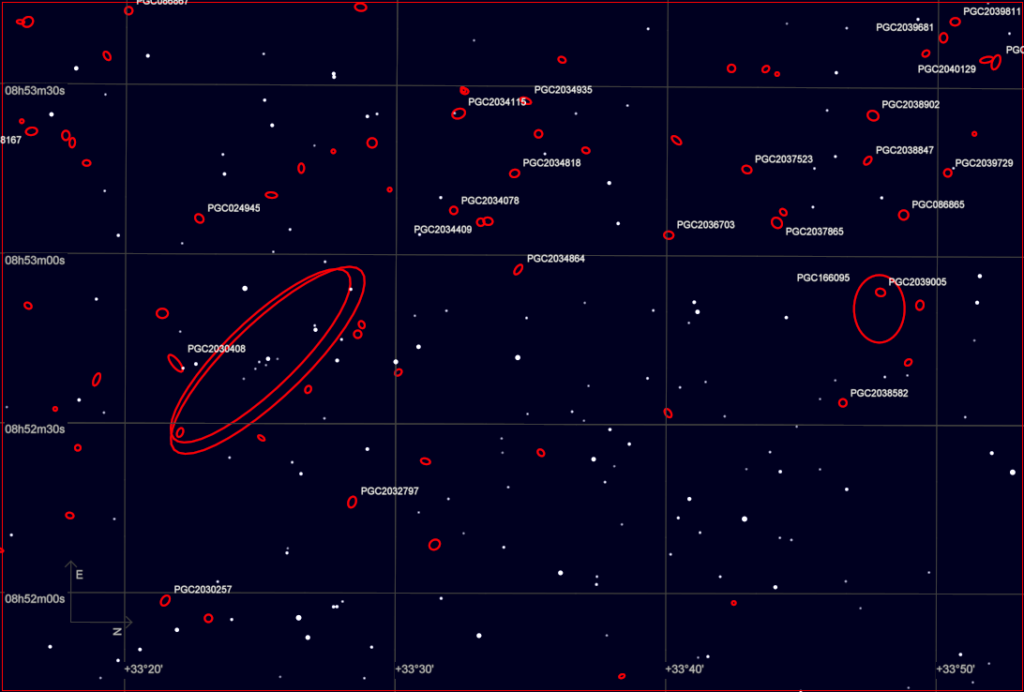
![The Heart Nebula (IC 1805 detail) [Ha:67x120s ]](https://ptobservatory.com/wp-content/uploads/2016/11/str_crv_dcv_ddp_IC-1805-1024x690.jpg)
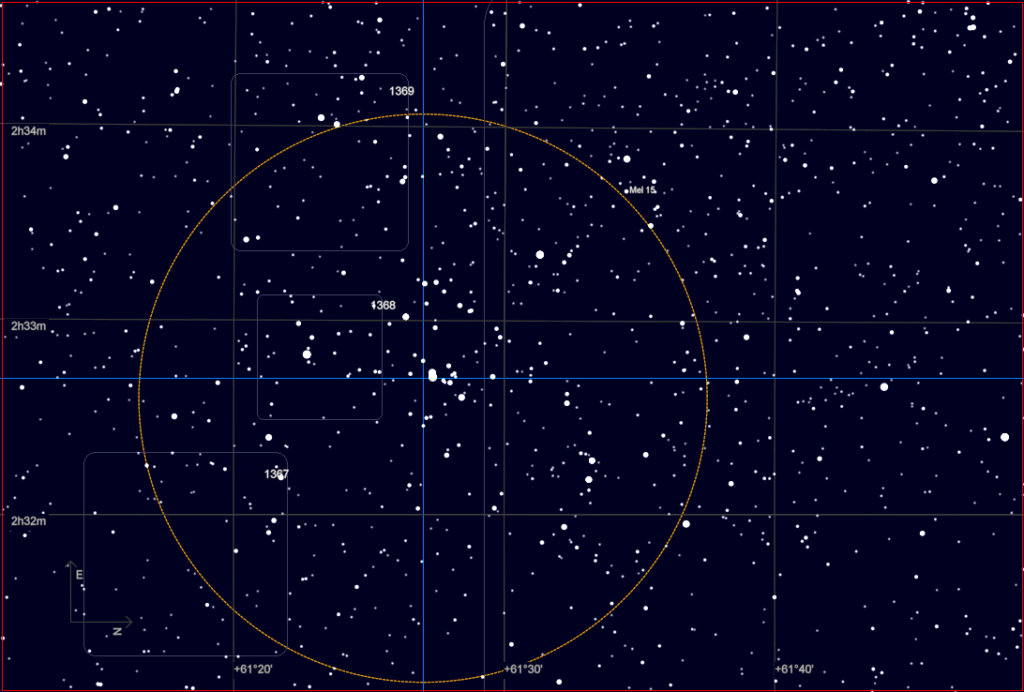
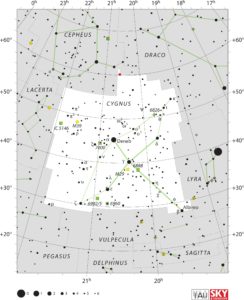
![(IC 1318)[C:60x60s]](https://ptobservatory.com/wp-content/uploads/2016/09/lvl_crv_ddp_IC-1318-1024x690.jpg)
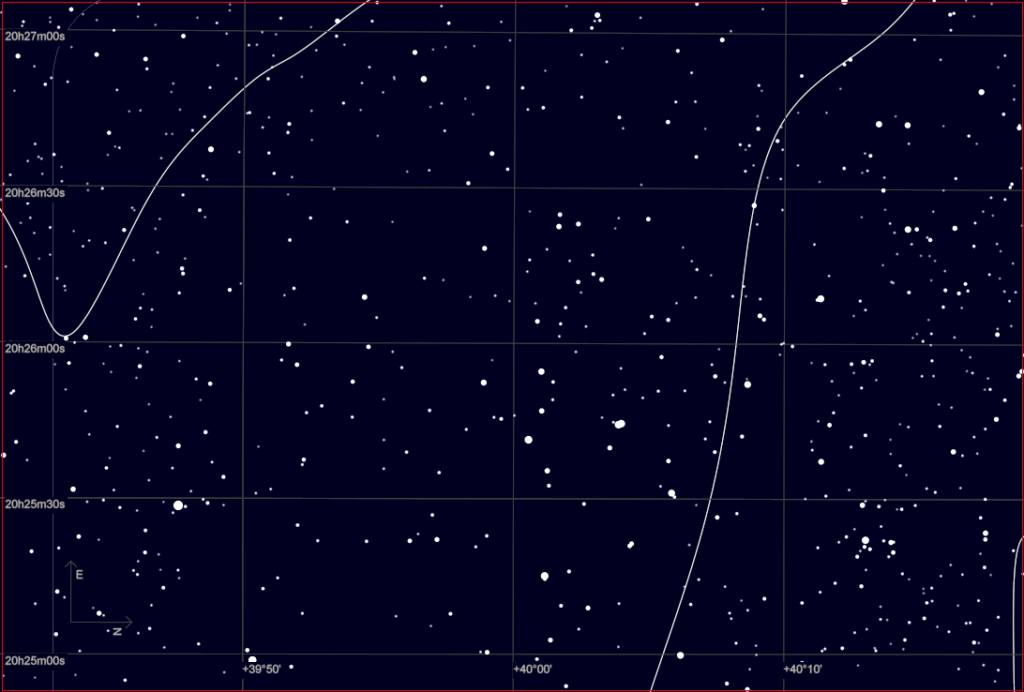
![Pacman Nebula (NGC 281) [Ha:60x120s]](https://ptobservatory.com/wp-content/uploads/2016/09/d_str_NGC-281_3-1024x690.png)
